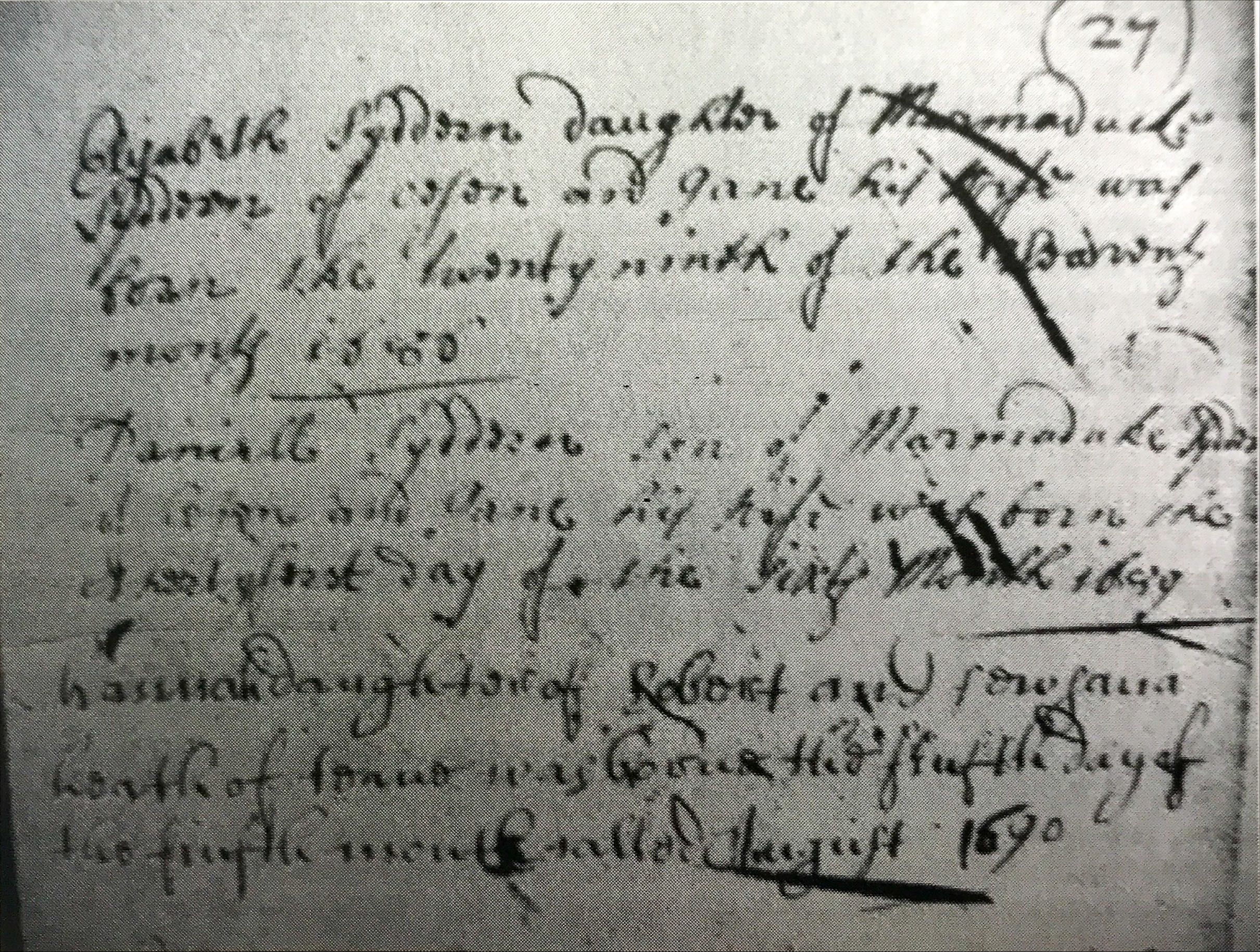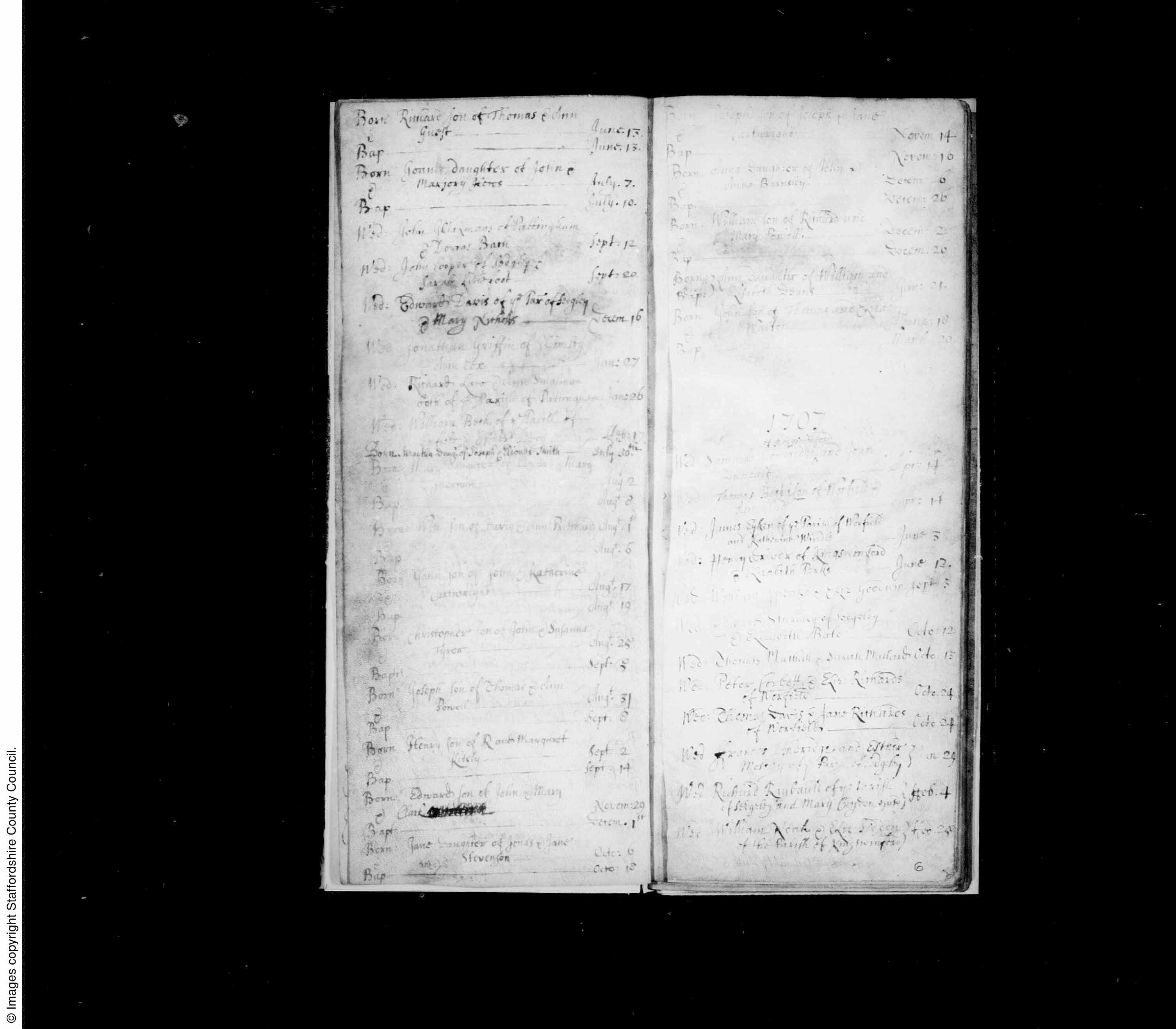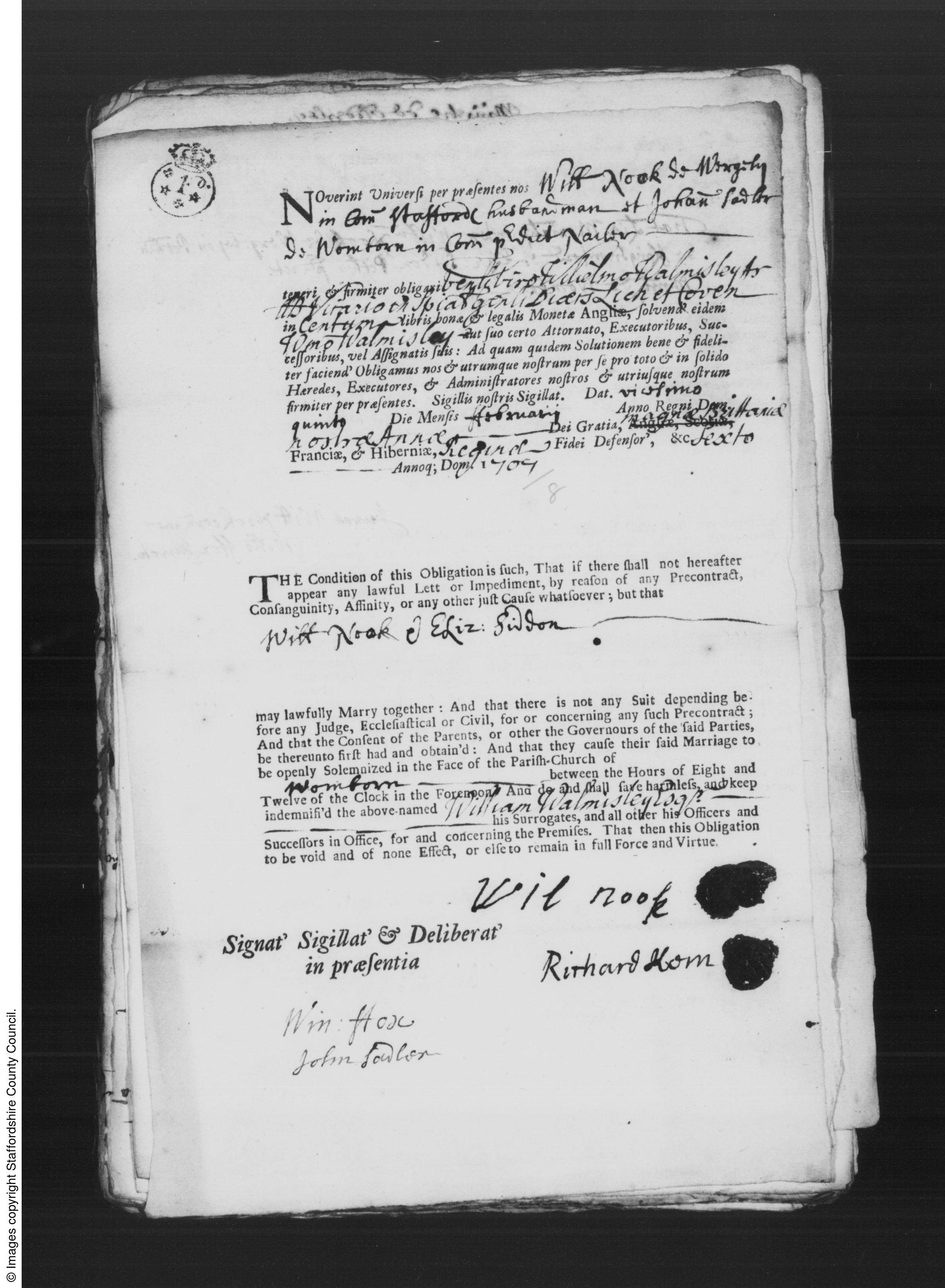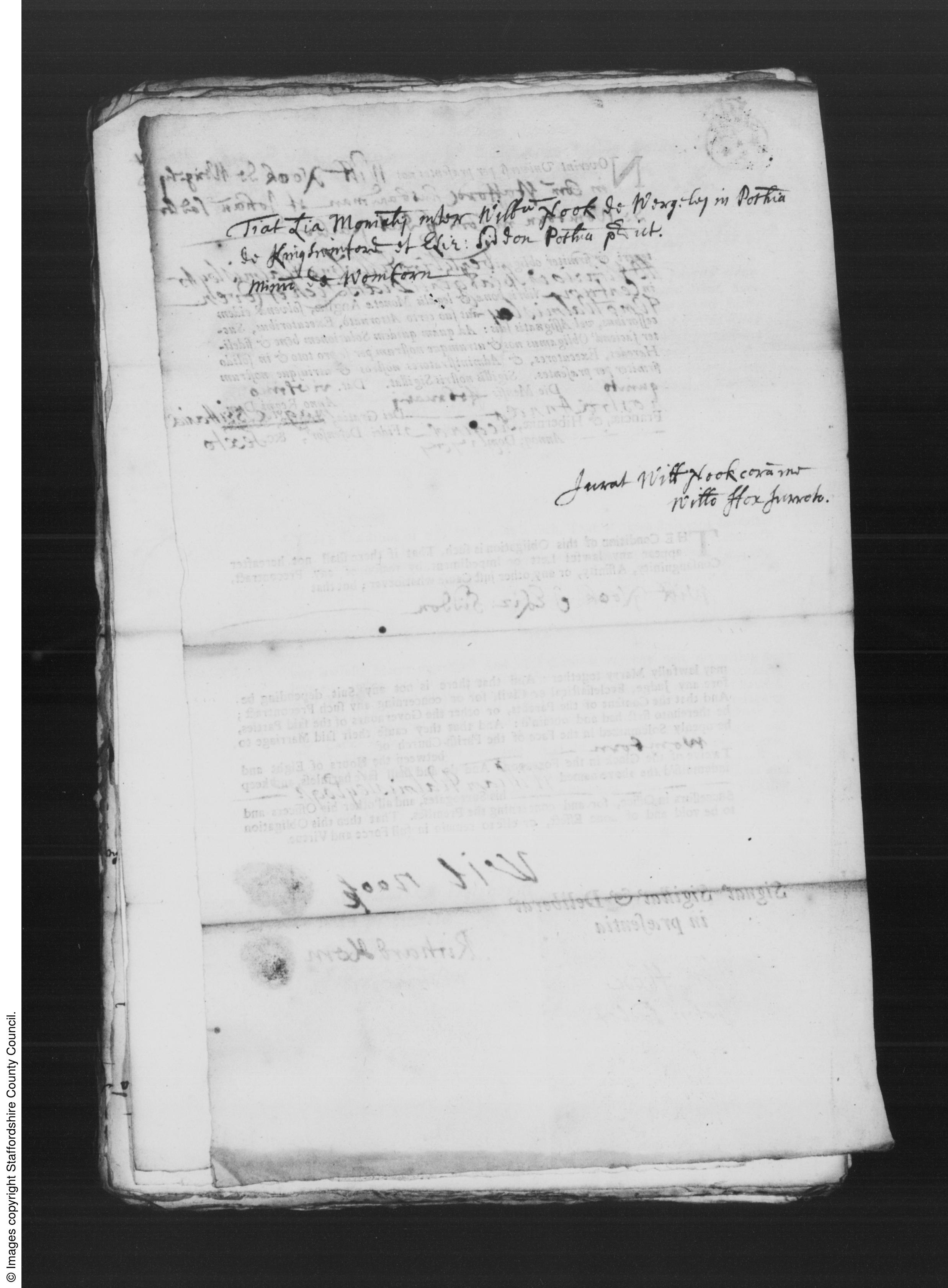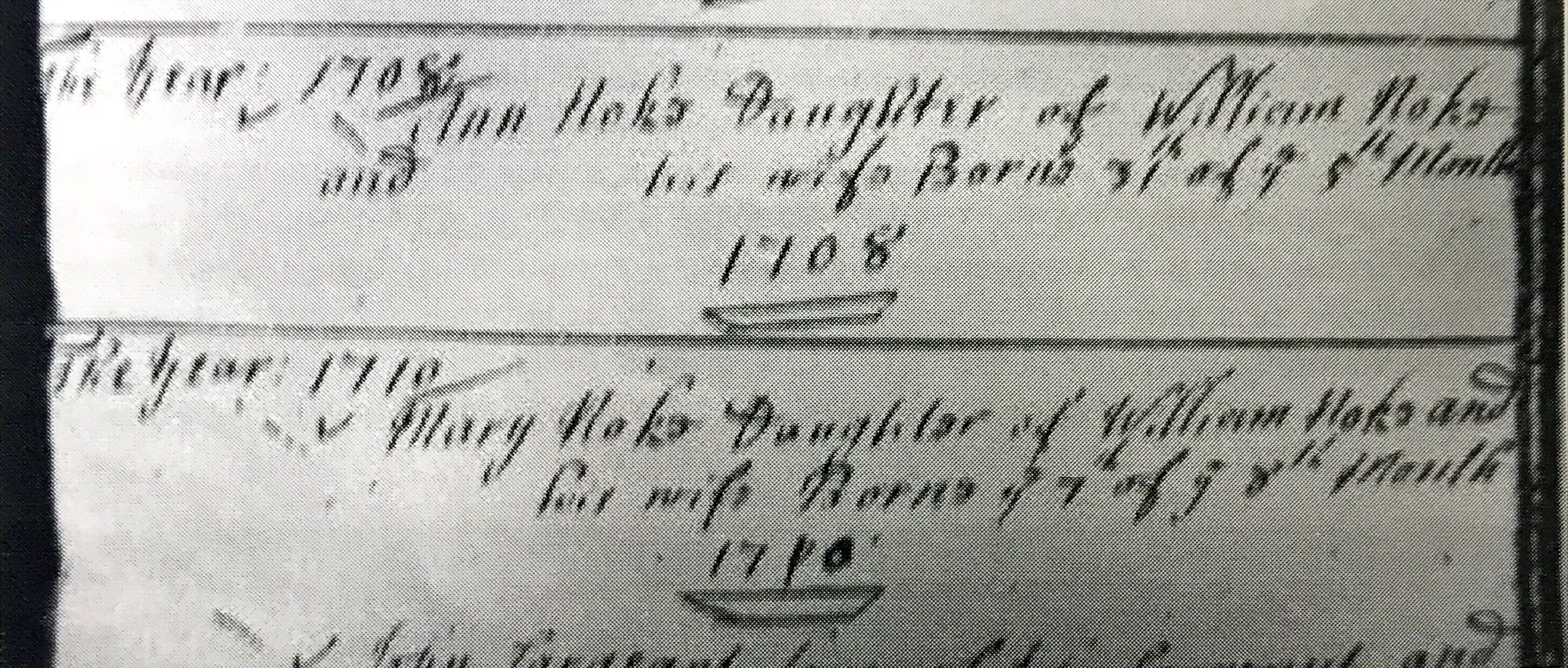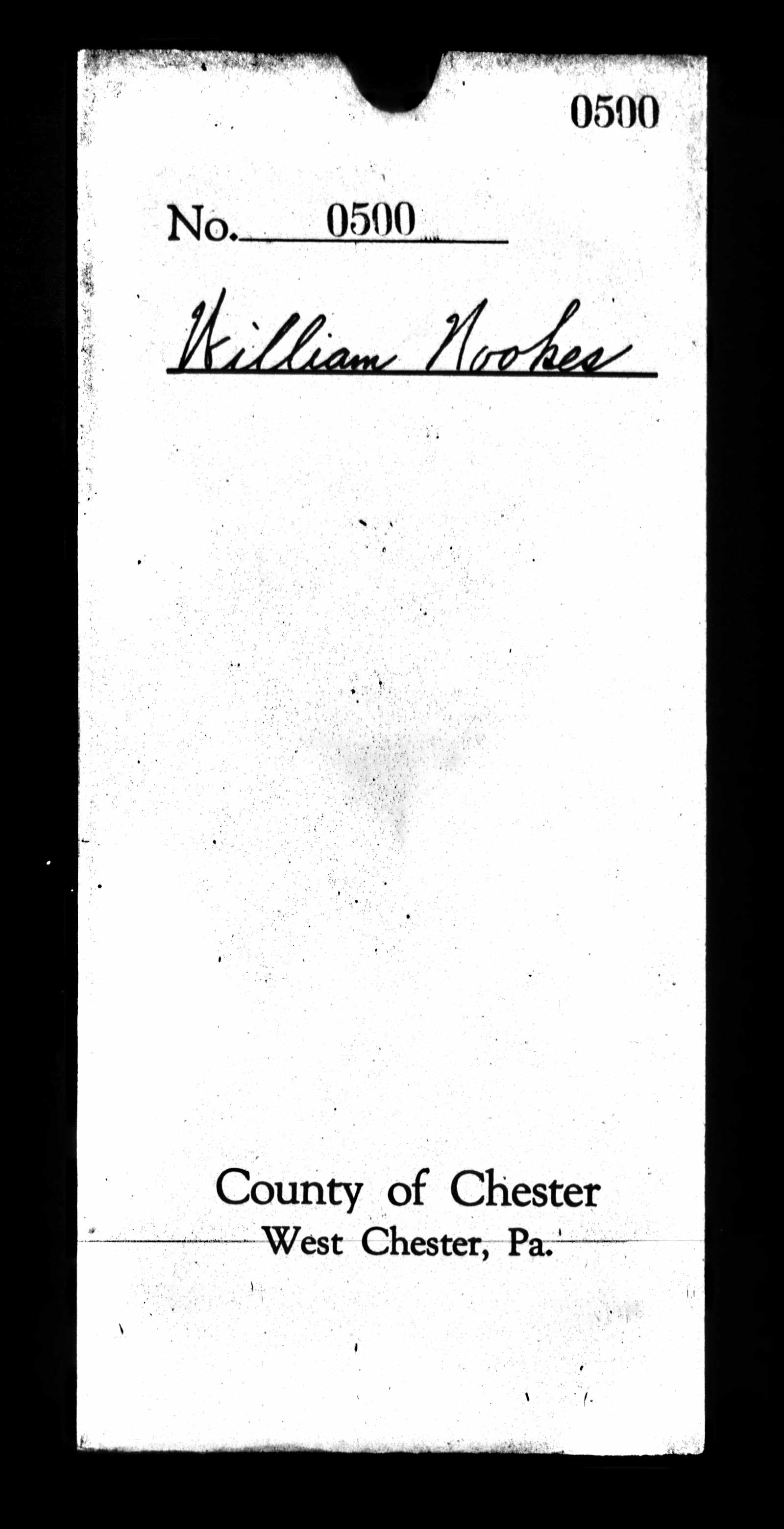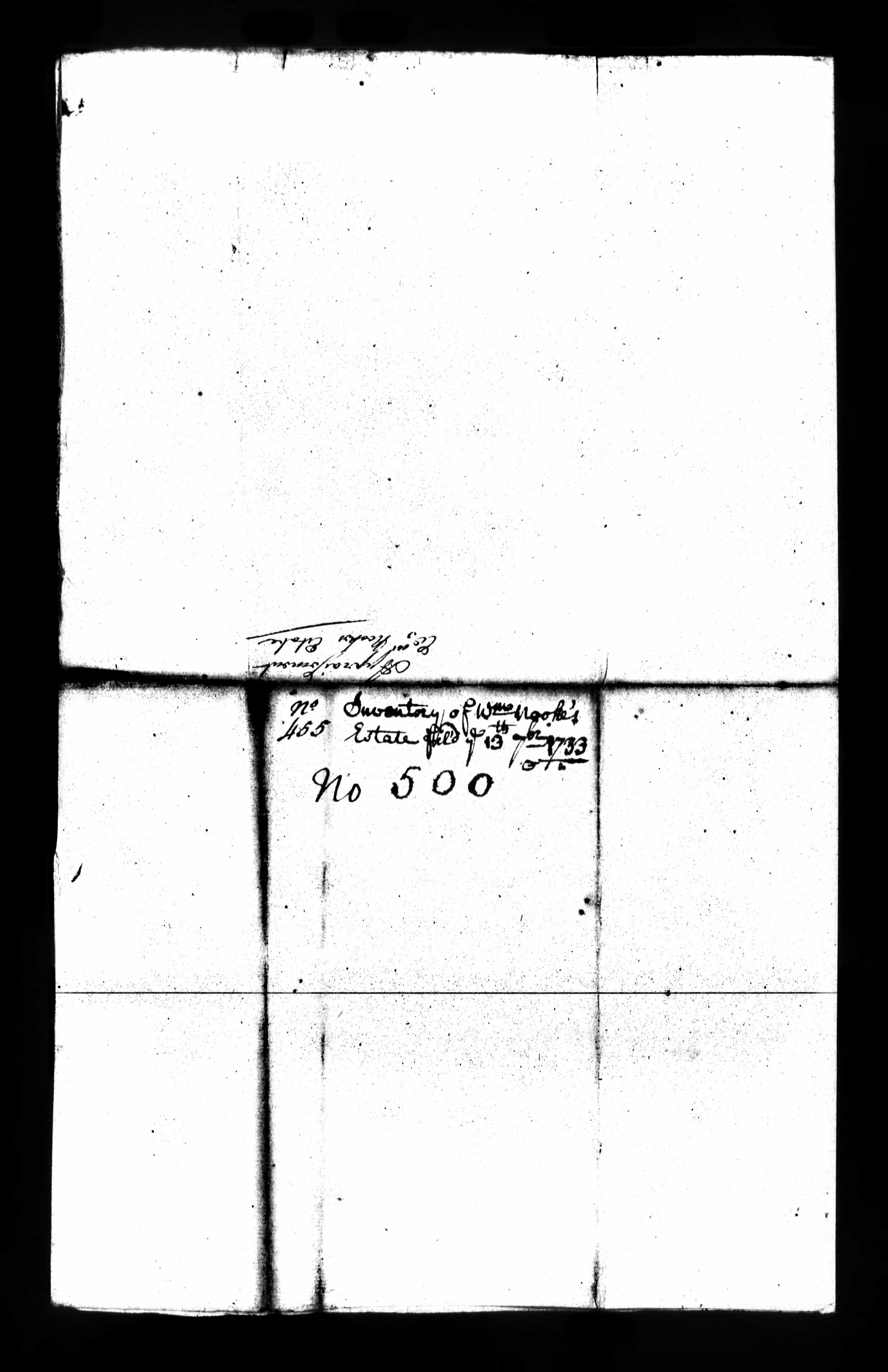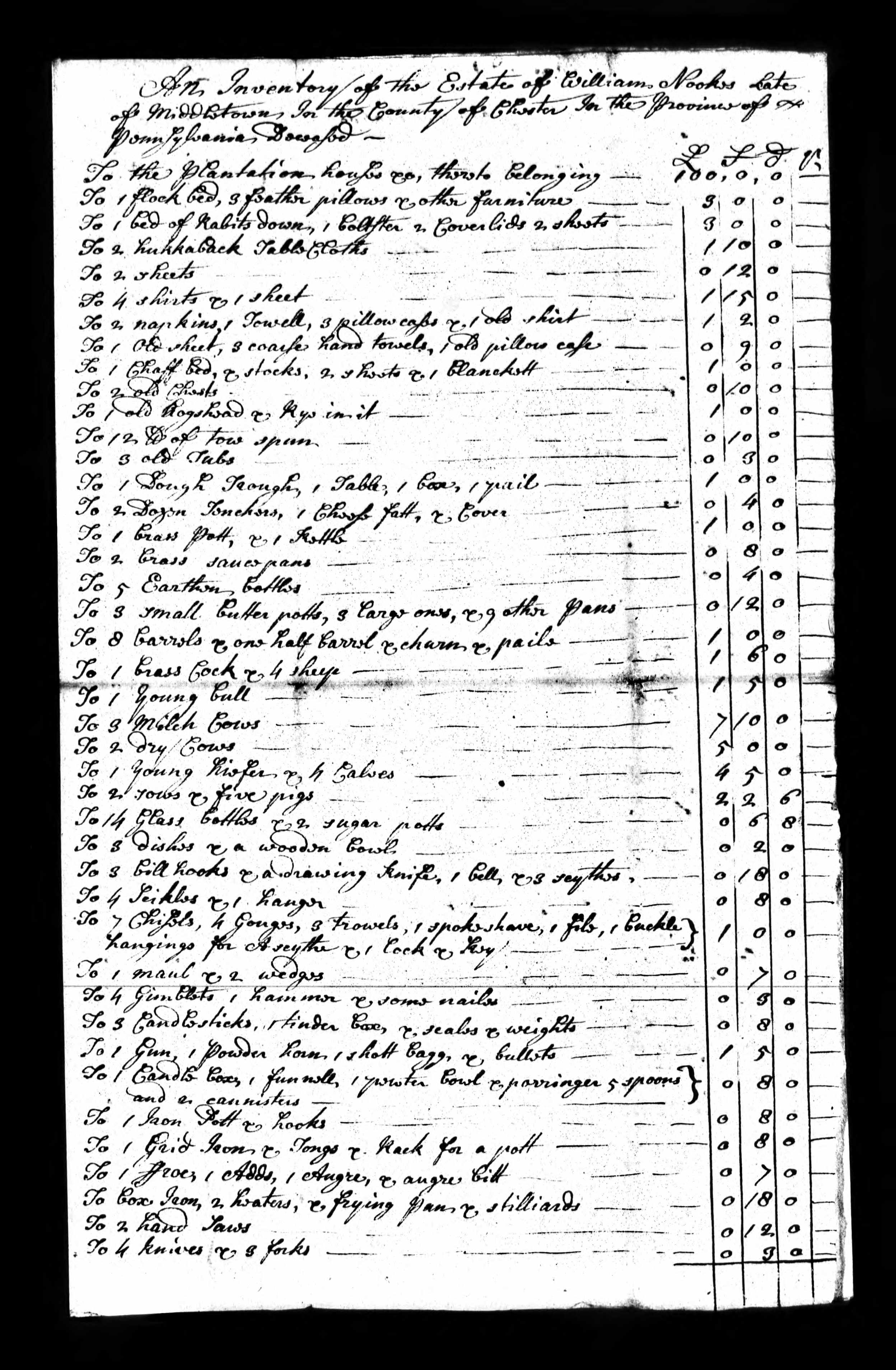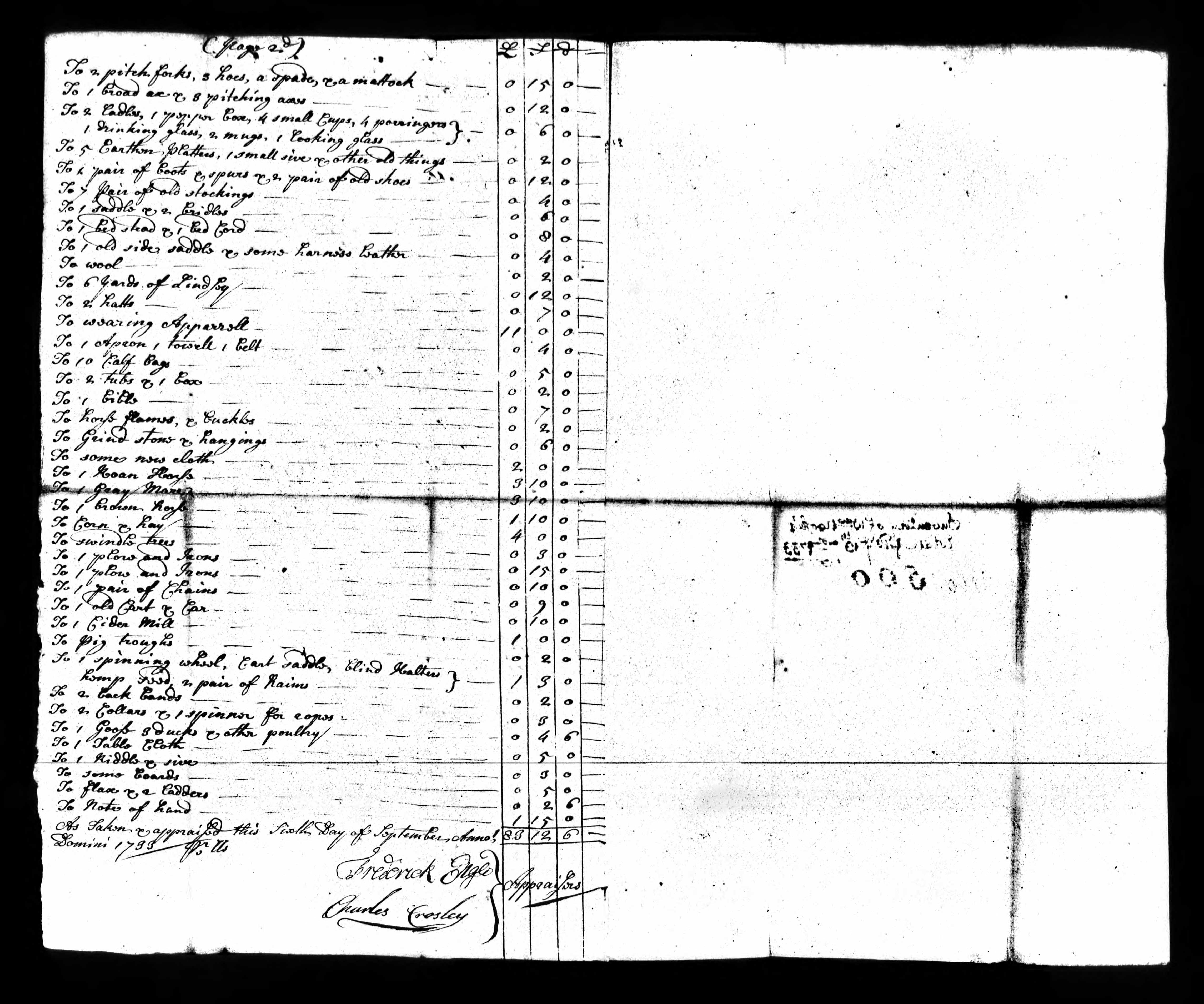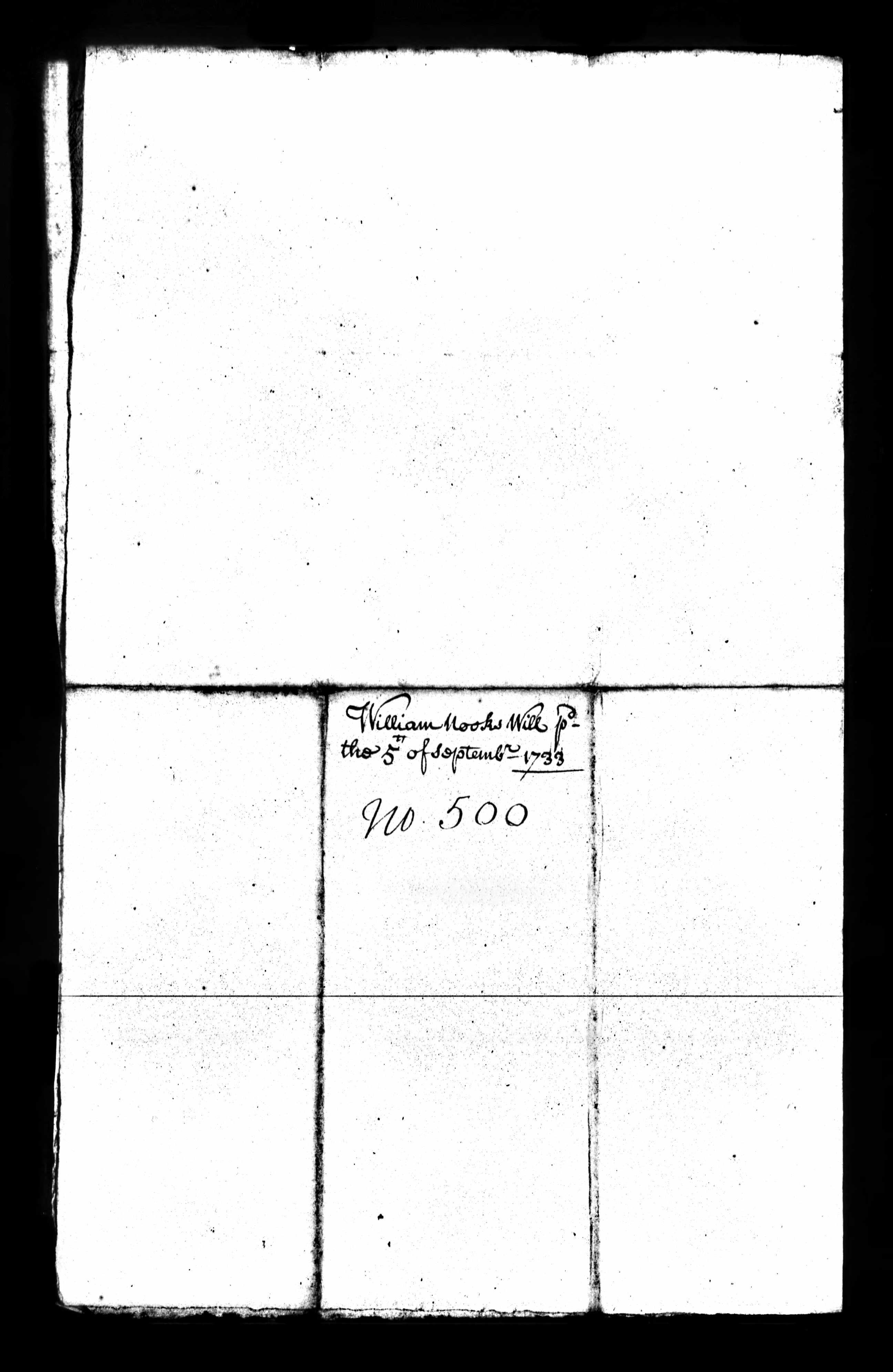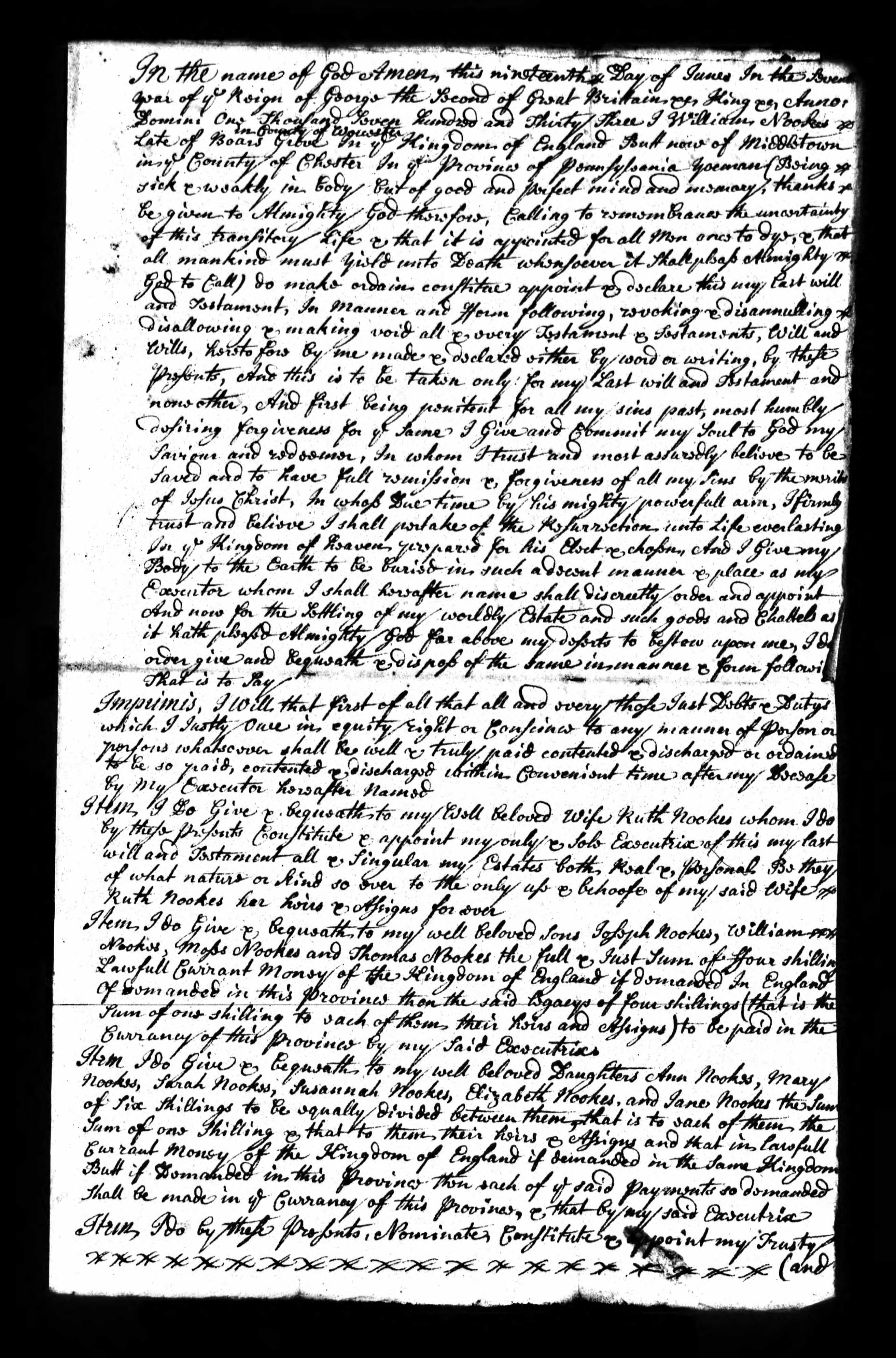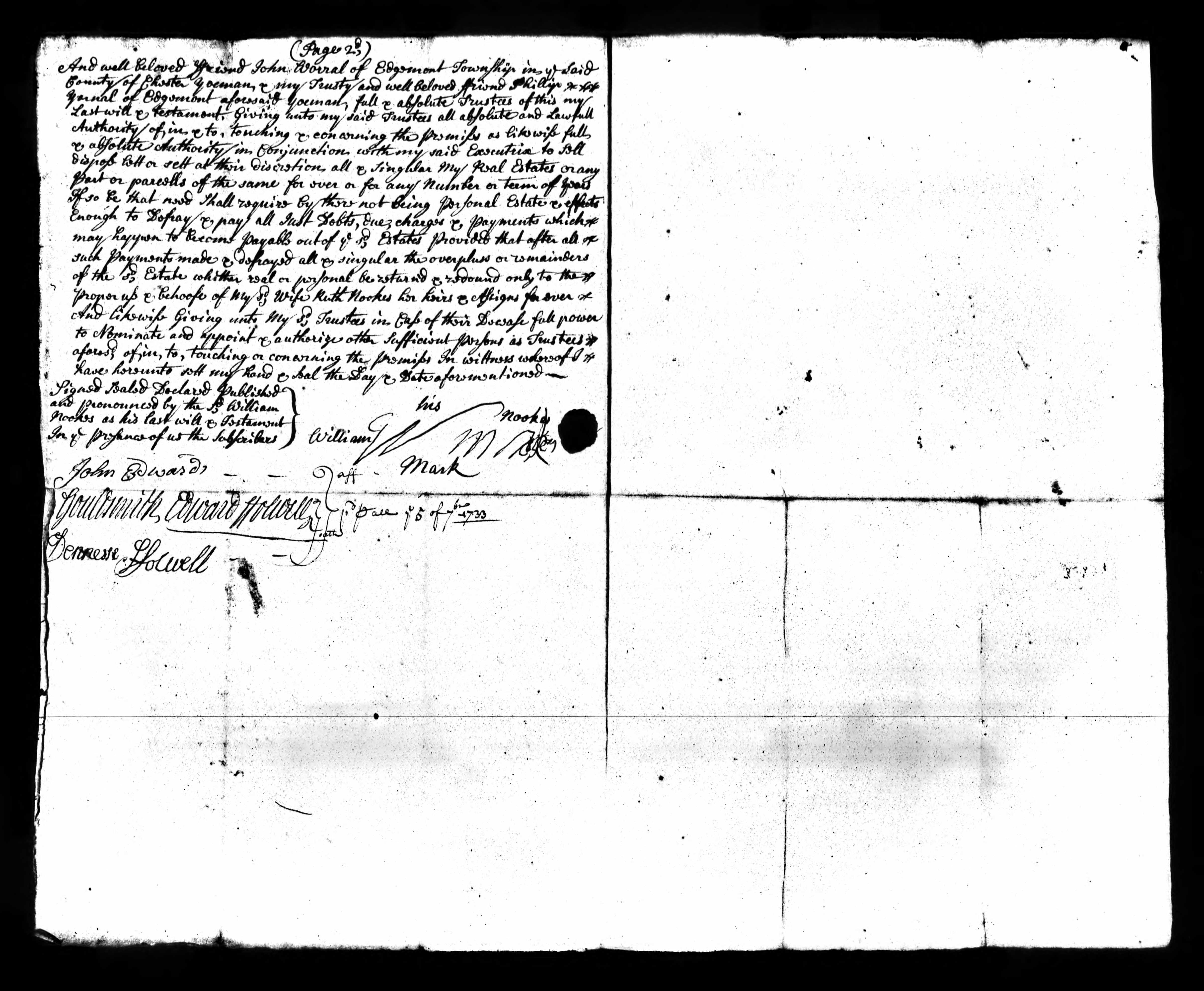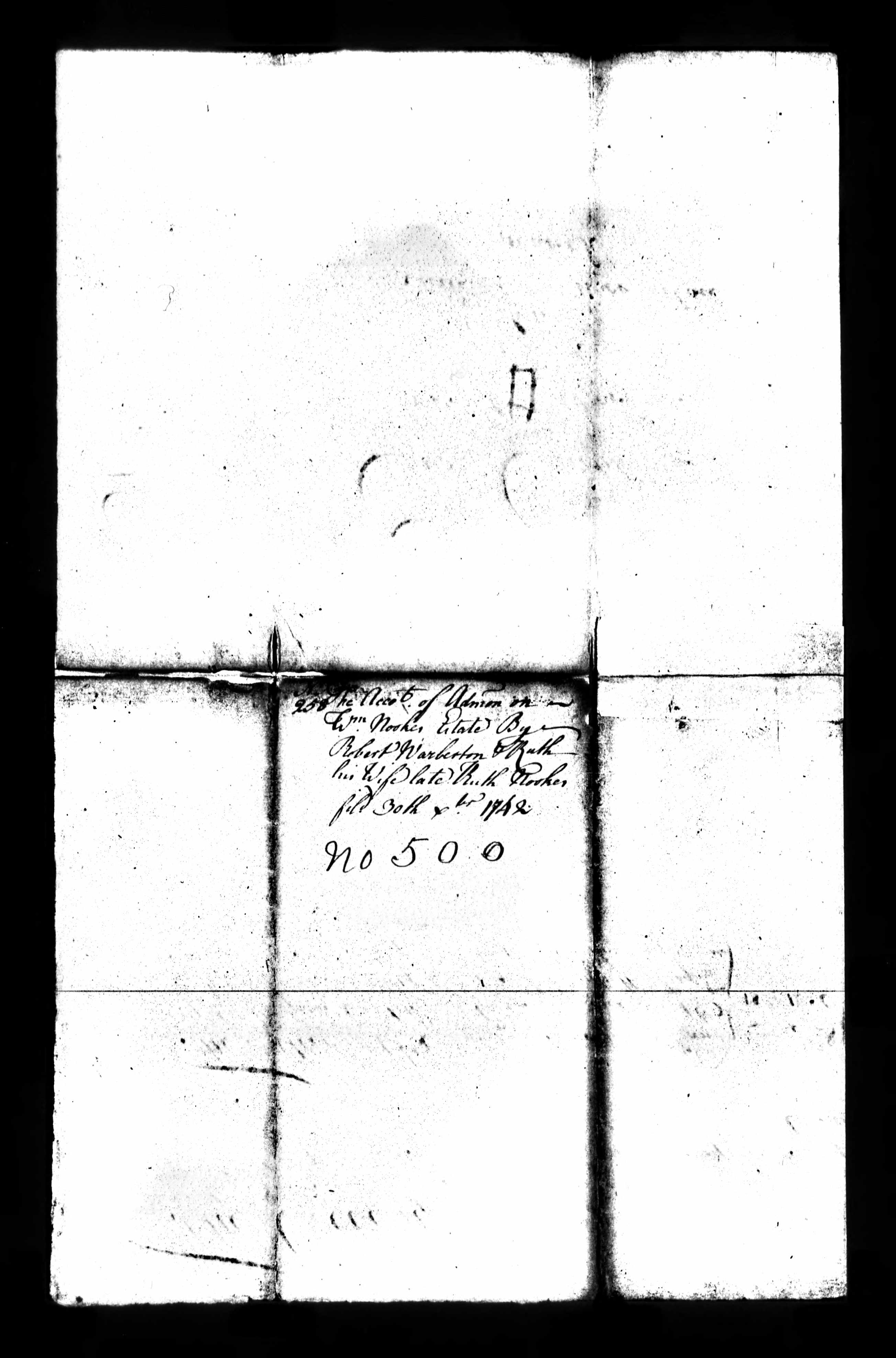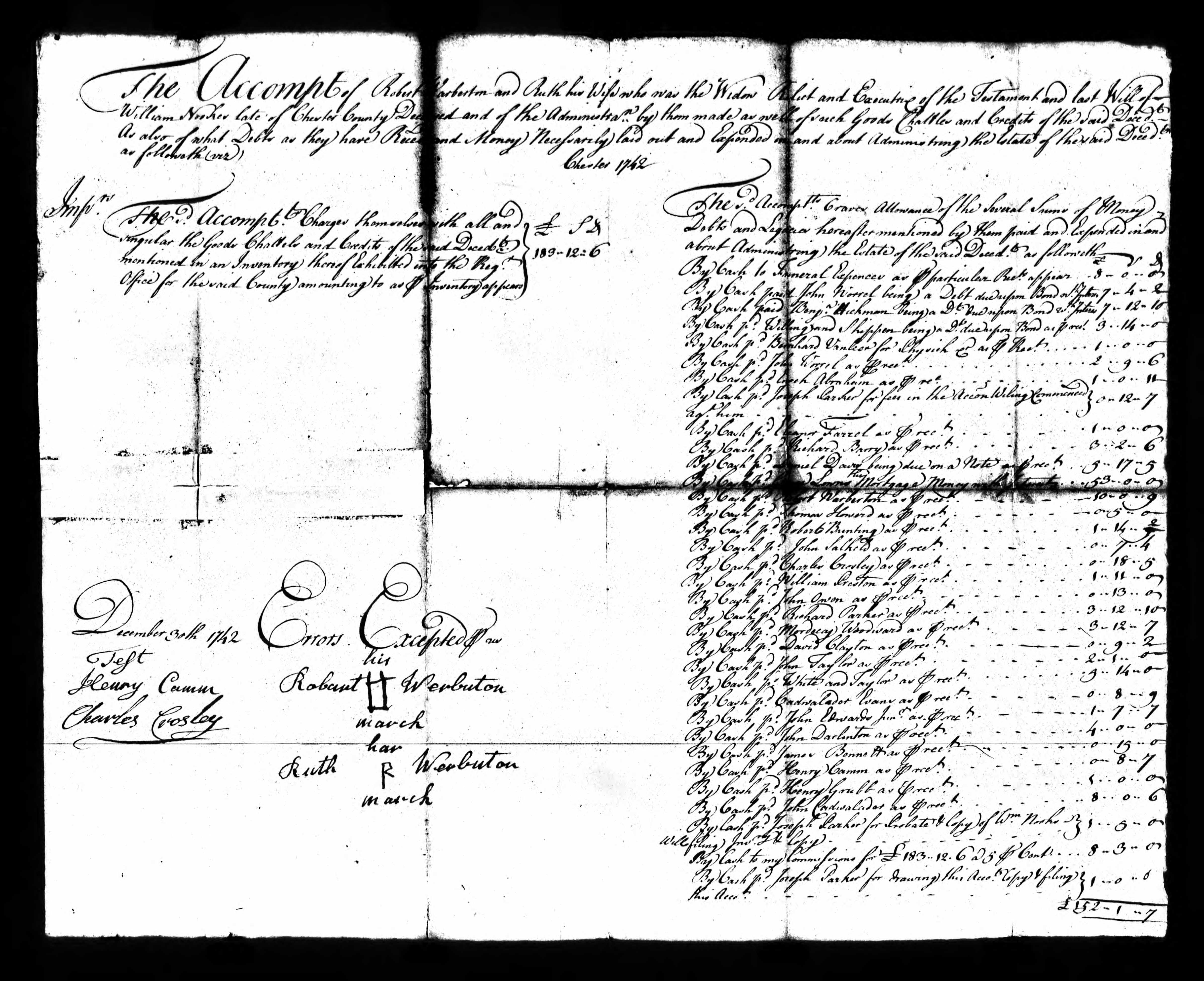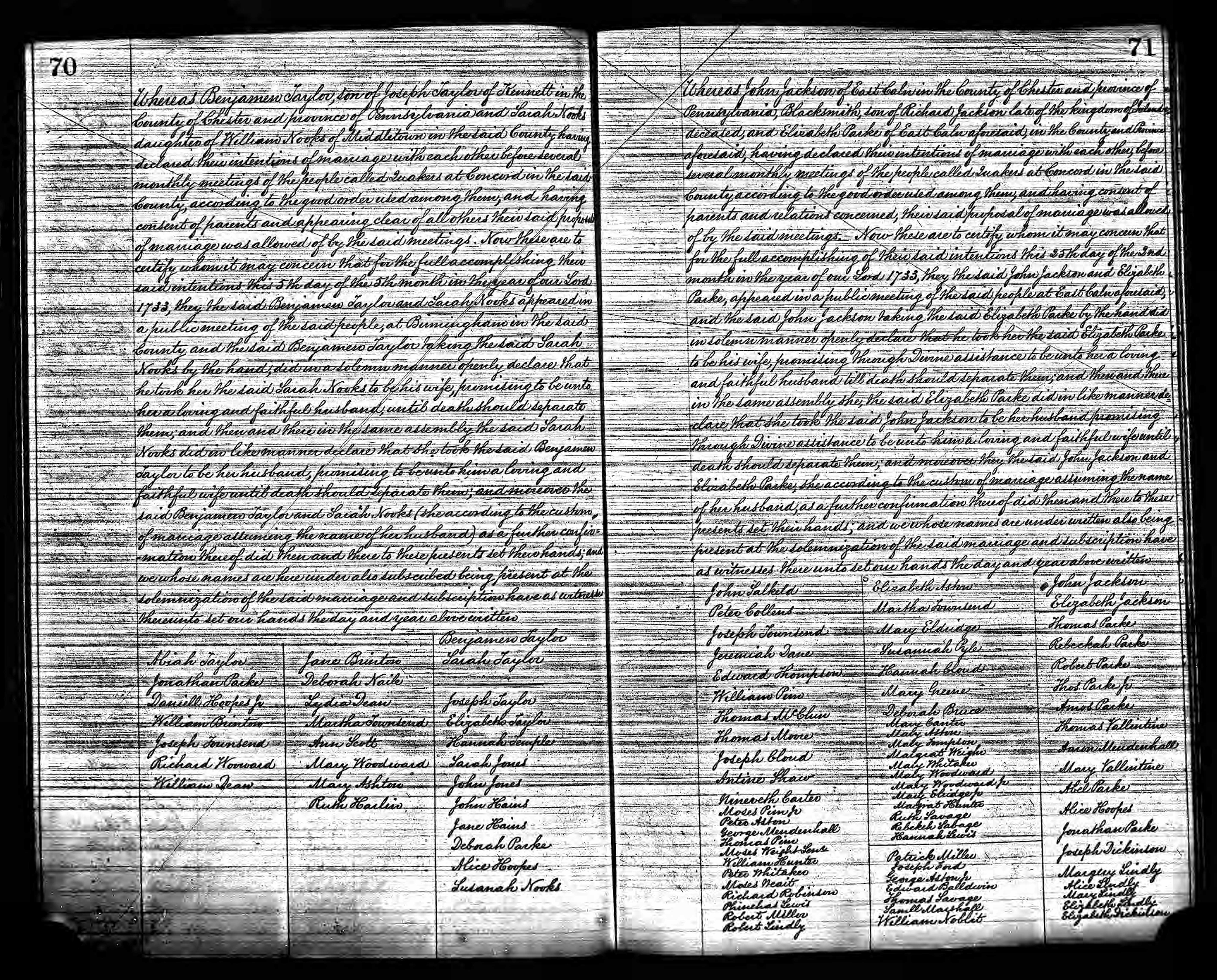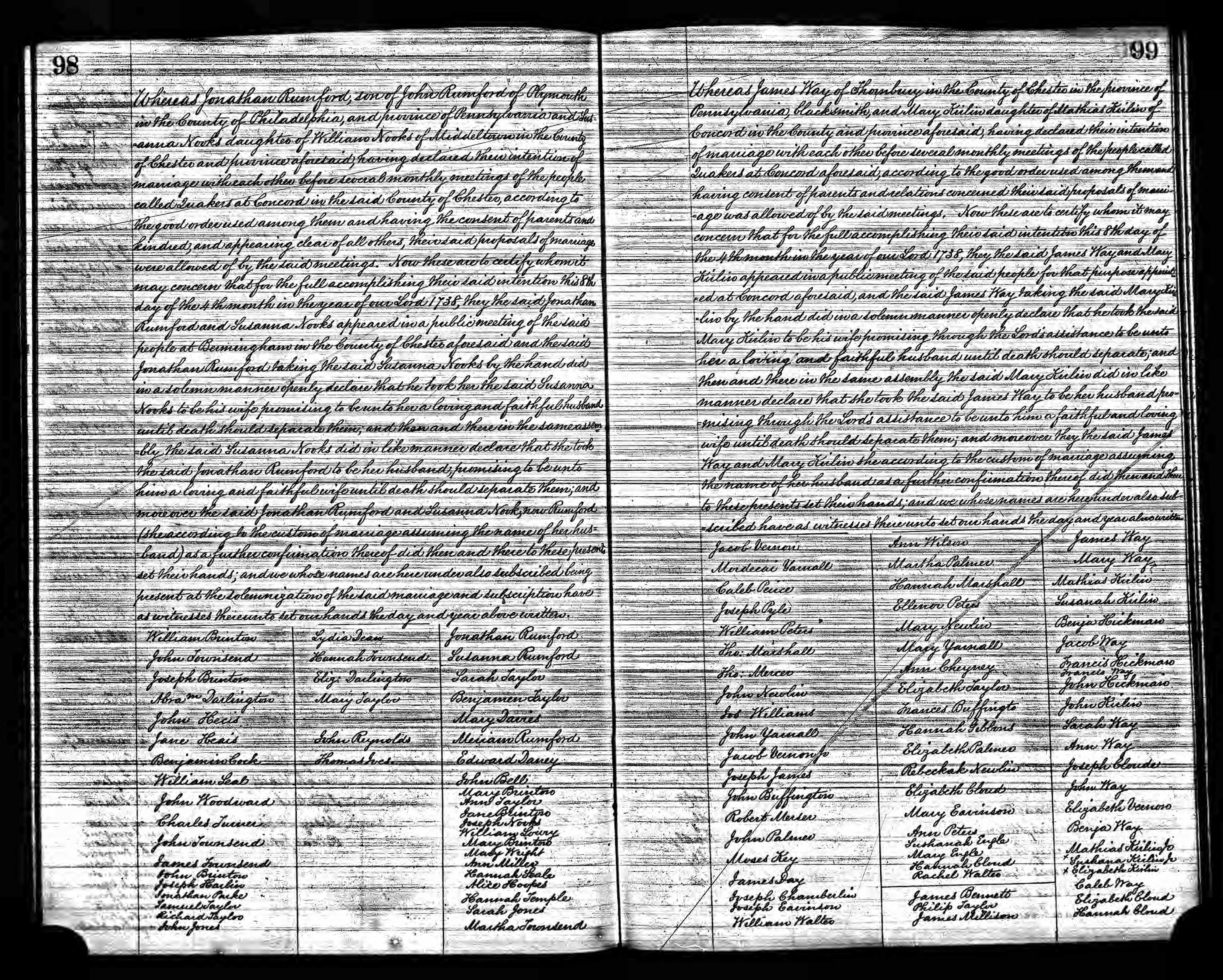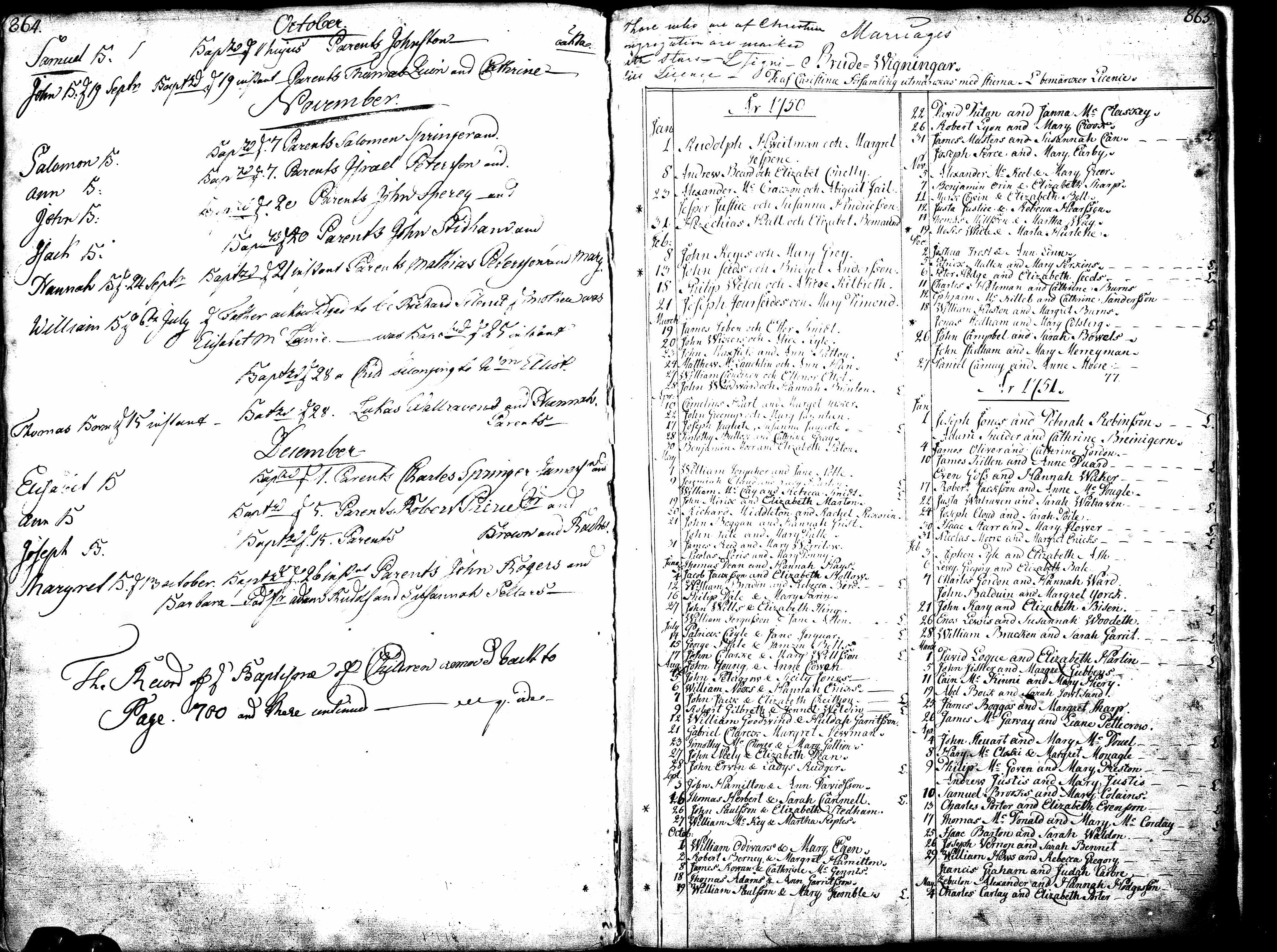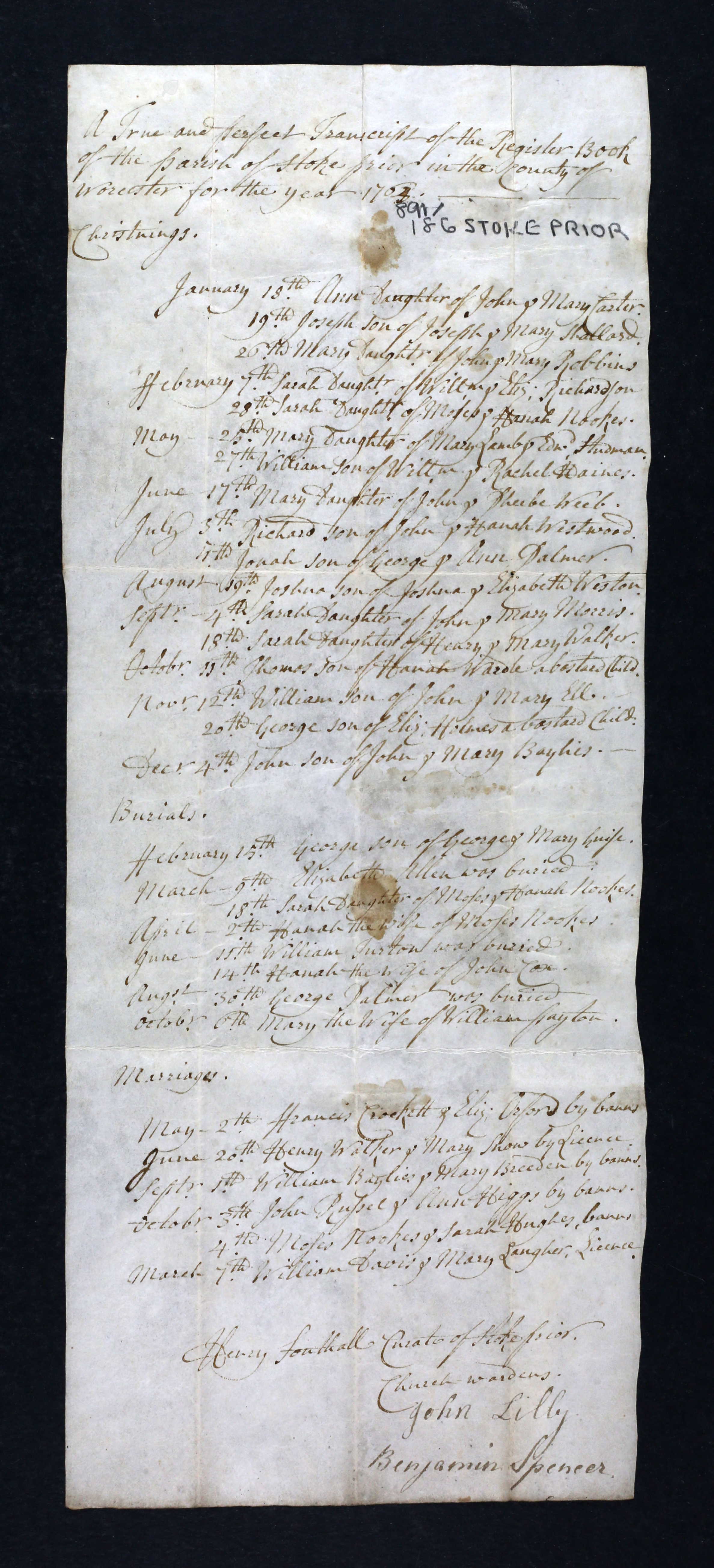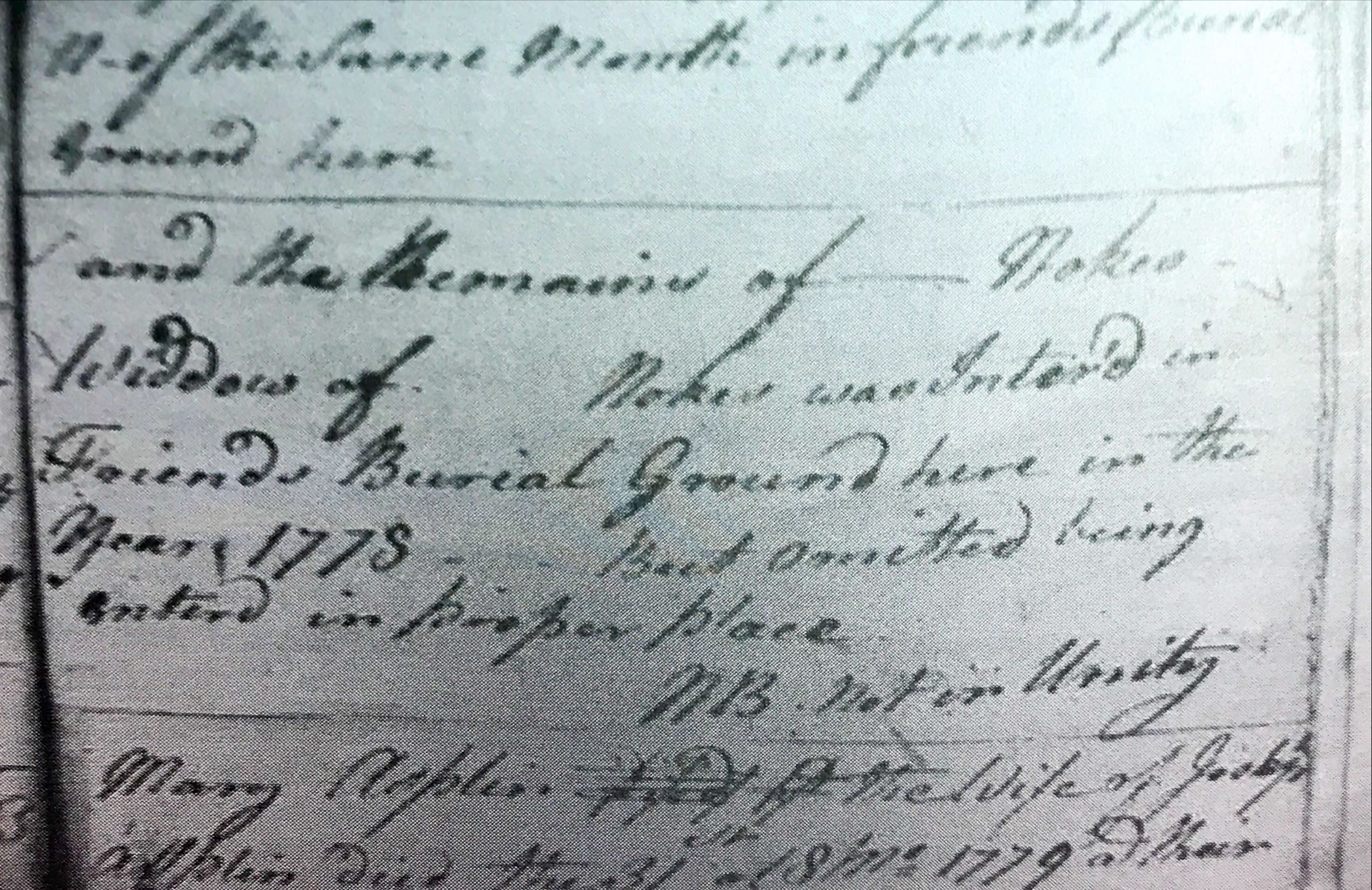Elizabeth is likely the Elizabeth SIDDON of Wombourne/Kingswinford who married a Willm NOAKE in 1707/08, i.e. 5 months before her daughter Ann was born.
There were many SIDDONs in the early Quaker records of Bromsgrove & nearby Chadwick. Particularly Marmaduke & Jane SIDDON the birth of whose son, Marmaduke, is recorded for 25 July 1705 in the Quaker records of Bromsgrove and explicitly in the registers of the Parish Church of Kingswinford demonstrating that the Quaker SIDDONs lived in Kingswinford. If Elizabeth SIDDON was already a Quaker and she married in a 'Steeplehouse' (the Quaker word for a church building) then she would have been viewed with disfavour by the Quaker community.
William and Elizabeth had ten children between 1708 and 1726. All survived infancy. From 1723 William had been renting land in Burcot Yield.
William emigrated to the American Colonies in about 1728 taking three of their children: Sarah, Susannah and Joseph. From December 1728 started to be in receipt of outdoor relief from the Overseers of the Poor.
It's probable that their eldest two daughters, Ann and Mary, were either nearly self-sufficient or married by this time. In 1729, her daughter Elizabeth, 10, and son William, 8, were apprenticed by the Overseers of the Poor, effectively sending them into servitude until they were 21.
By 1736 Elizabeth was in the workhouse with her two youngest children, Jane and Thomas. The building, now known as Strand House, still stands on the Strand between Stourbridge Road and Birmingham Road. It had been named Cock Hall when sold to the Parish in 1723.
In July 1738 an entry in the Account Book states 'Mrs Nocks children to be set out'. Elizabeth was given 14 shillings as payment for the transportation of her daughter, Jane, then aged 13, to London probably bound for an apprenticeship organised by the Parish of Bromsgrove. Later that year Elizabeth received a shilling to buy her son Thomas a hat. It's likely that he was being prepared for an apprenticeship and, by July 1739, only Elizabeth remained in the workhouse.
From August 1739, Elizabeth was appointed as a governess. She began to received money or goods for the use of the workhouse. Her personal needs were being taken care of including shoes, gowns, stays, handkerchiefs and spectacles.
An entry dated 10 Dec 1746, indicates that she remained in a position of authority with responsibility, along with Dorothy COATES for the 'allotments of meat provided by Mr Tilt for the keeping of the poor in the Workhouse'. An adjacent entry indicates that there were '2 beds in Mrs Nocks Room', so she had her own (shared) room at the Workhouse.
She is mentioned in the Overseers Account Book on 1 Mar 1750/51 when she would have been 64 years old, but the next mention is in November 1772 when the 'Widow Nock' received a gown and shoes.
An entry appears in the Overseers Account Book dated 25 Oct 1777 for 'Coffin Allowance for Widow Noakes 0-6-6'.
Her burial appears in Quaker burial records. She was aged 90.

